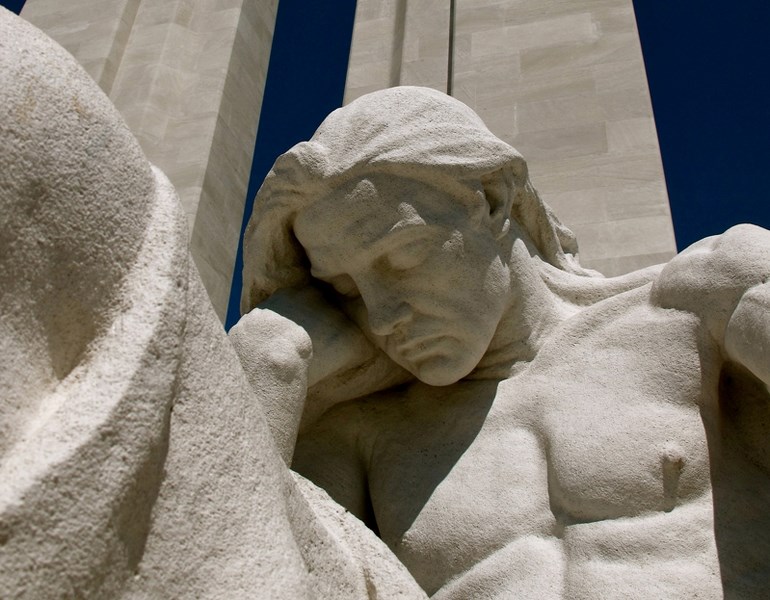INNISFAIL - The symbolic value the Canadian National Vimy Memorial holds today was born only a few years after the end of the First World War.
In 1920 a decision was made to construct a memorial that would honour the 11,285 Canadians who died in France and who have no known place of burial.
Of the 66,000 Canadians who gave their lives during the Great War many have a place of burial in one of the vast number of war cemeteries within France and Belgium.
The choice of location for the Vimy Monument was made by Prime Minister Mackenzie King who persuaded the French government of the time to grant the 250 acres of land on which the memorial exists.
Today the monument dominates the landscape near the mass of the Vimy Ridge. Its scale is impressive - a fitting tribute to all the names carved on its walls. King spoke of the site as being "one of the earth's altars."
The monument took 11 years to construct and was designed by Canadian architect Walter Allward. It rests on a bed of 11,000 tonnes of concrete and the two white pylons themselves contain 6,000 tonnes of limestone.
Adorning the monument are 17 symbolic figures -- one cloaked figure of a woman (made from a 30-tonne block of stone) stands at the front of the monument representing Canada - a young nation mourning her dead.
The consecration of the Vimy Memorial took place in July of 1936 with a grand unveiling of the finished monument.
The national president of the Royal Canadian Legion, Brigadier Alex Ross, organized a pilgrimage of 8,000 veterans to attend the ceremony. Vimy had by now become the focal point for Canadians to remember the fallen of the First World War.
In 1967 on the 50th anniversary of the battle, Ross wrote the assault on the morning of April 9 was "Canada from the Atlantic to the Pacific on parade. I thought then that in those few minutes I witnessed the birth of a nation." And so the phrase, "birth of a nation" often quoted, entered into the language and annals of modern Canadian history.
Today the Vimy Foundation (founded only in 2006) continues the work of preserving and promoting Canada's First World War legacy, as symbolized by the memorial at Vimy. The work of the foundation involves educational and awareness programs for youth both in Canada and overseas.
This charitable organization has successfully lobbied for government to hold a public commemoration for the last surviving Great War soldier in 2011, for government buildings around the country to lower their flags on Vimy Day and for the Vimy Memorial to be included in the design of the current $20 bill.
Today their aim is to create a Vimy Visitors Education Centre to be built at the site of the Vimy Memorial in France. To assist in their fundraising cause they are asking Canadians to donate a $20 bill, "A Vimy" for "Vimy".
The Vimy Memorial does not exult a great victory - it simply honours the dead. It serves to remember the appalling loss of human life.
Let us never forget the cost, the sacrifices, but also the achievements of those who served in the First World War.
Donations can be made to the Innisfail Branch of the Royal Canadian Legion. The funds will be passed to the Vimy Foundation.
Arno Glover is the past manager of the Innisfail Royal Canadian Legion.
Brigadier Alex Ross, writing on the Vimy battle in 1967
"I thought then that in those few minutes I witnessed the birth of a nation."



